Reconstructive surgery aims to fix body parts damaged by injury, illness, or birth defects. It differs from cosmetic surgery, which changes healthy body parts for looks alone.
Reconstructive surgery can help restore function and appearance after trauma, cancer, or other medical issues.

This type of surgery covers a wide range of procedures. It can rebuild breasts after cancer, fix cleft lips in babies, or help burn victims. Surgeons may move skin, bone, or other tissues to repair damage. The goal is to help patients look and feel more normal.
People often mix up reconstructive and plastic surgery. While both change how someone looks, reconstructive surgery fixes real medical problems. It can boost self-esteem and quality of life for many patients. Skilled surgeons use advanced methods to get the best results possible.
The Role of Reconstructive Surgery
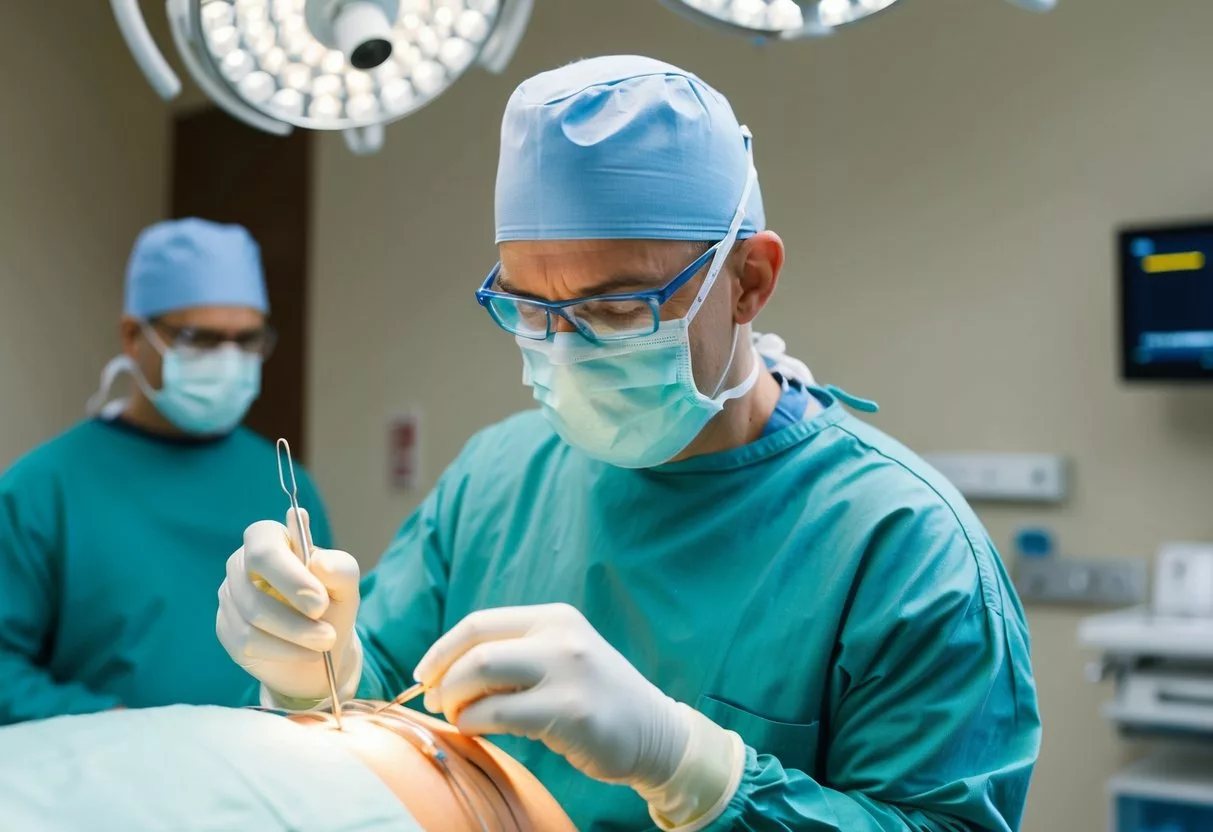
Reconstructive surgery plays a vital part in restoring both form and function to the human body. It helps patients regain lost abilities, achieve a more typical appearance, and improve their overall quality of life.
Restoring Functionality and Mobility
Reconstructive plastic surgery aims to restore normal function to parts of the body affected by injury, illness, or congenital conditions. This type of surgery can help patients regain mobility and use of affected body parts.
For example, reconstructive surgery can repair tendons and muscles to restore movement in hands or feet. It can also rebuild joints to improve range of motion for patients with arthritis or injuries.
In cases of severe burns, reconstructive surgery helps restore flexibility to scarred skin. This allows patients to move more freely and perform daily tasks with greater ease.
Enhancing Normal Appearance
Reconstructive surgery also plays a key role in helping patients achieve a more typical appearance. This can be especially important for those born with physical differences or who have experienced disfiguring injuries.
Procedures like rhinoplasty can correct both functional and aesthetic issues with the nose. Breast reconstruction after cancer surgery helps restore a natural-looking chest contour.
For children born with cleft lip and palate, reconstructive surgery can dramatically improve facial appearance and function. This allows for normal speech development and easier eating.
Improving Patient Quality of Life
By restoring functionality and enhancing appearance, reconstructive surgery often leads to significant improvements in a patient’s quality of life. It can boost self-confidence and help patients feel more comfortable in social situations.
Reconstructive procedures can alleviate physical pain and discomfort. For instance, breast reduction surgery can relieve back and neck pain caused by overly large breasts.
Many patients experience improved mental health after reconstructive surgery. Feeling more “normal” in appearance and having better physical function can reduce anxiety and depression.
Reconstructive surgery also helps patients integrate more easily into work and social environments. This can lead to better job opportunities and stronger personal relationships.
Conditions and Defects Addressed by Reconstructive Surgery
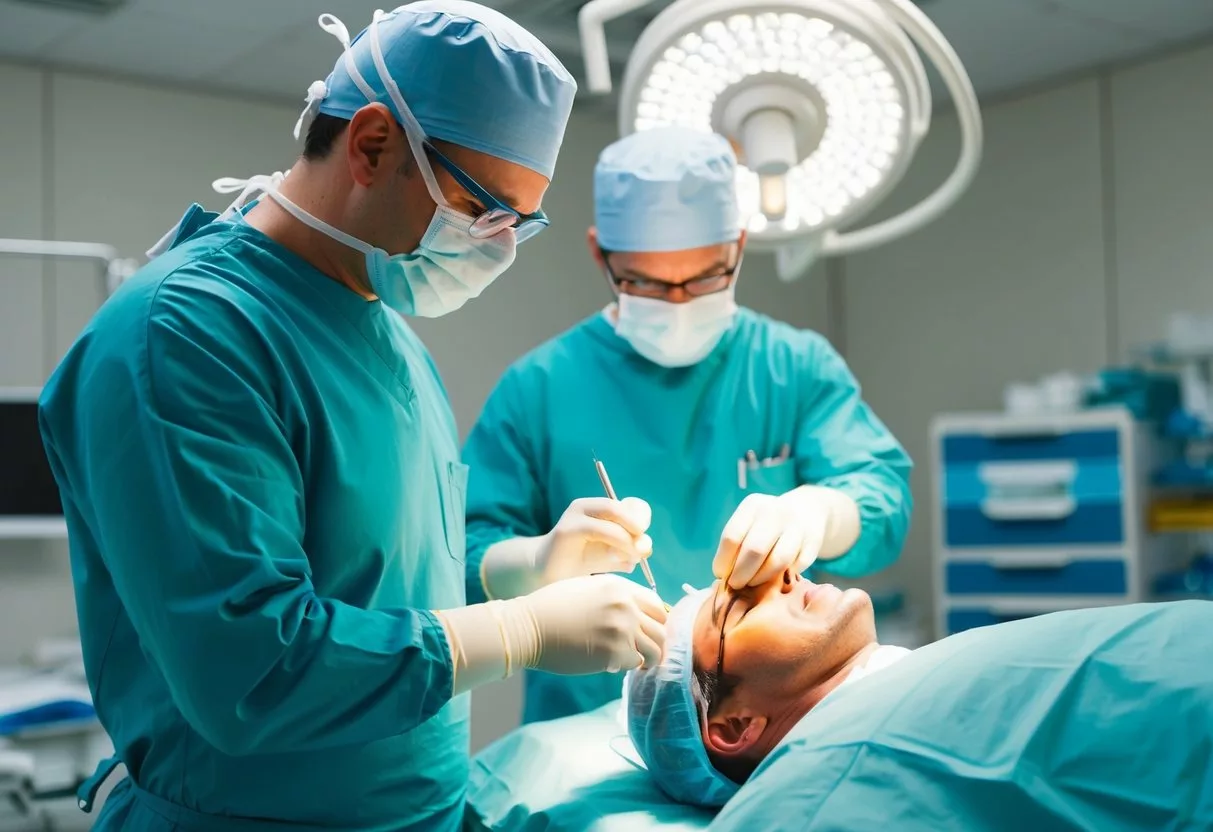
Reconstructive surgery aims to fix a wide range of physical issues. It helps people with birth defects, injuries, and those who have had major surgeries. The goal is to improve how the body works and looks.
Cleft Lip and Palate Repair
Cleft lip and palate are birth defects that affect the mouth and lip. Babies born with these conditions may have trouble eating and speaking.
Surgery can fix these issues. Doctors often do the first surgery when a baby is 3-6 months old. They close the gap in the lip. Later, they fix the palate.
The process may need several surgeries over time. As the child grows, more work might be needed. The result can be a normal-looking mouth and better function.
Craniofacial Reconstruction
This type of surgery fixes problems with the skull and face. It helps people born with issues or those hurt in accidents.
One common issue is craniosynostosis. This happens when a baby’s skull bones join too early. Surgery can reshape the skull to allow normal brain growth.
Other conditions include: – Facial fractures – Jaw problems – Eye socket issues
The goal is to improve looks and how parts of the face work. This can boost self-esteem and quality of life.
Breast Reconstruction Post-Mastectomy
Breast reconstruction helps women who have had a mastectomy. This is when a breast is removed due to cancer or other reasons.
There are two main types: 1. Implant-based reconstruction 2. Using the patient’s own tissue
The choice depends on body type, health, and personal preference. Some women have surgery right after mastectomy. Others wait months or years.
The aim is to create a breast shape that looks natural. This can help women feel whole again after cancer treatment.
Body Contouring After Major Weight Loss
People who lose a lot of weight often have loose, extra skin. This can cause rashes and make it hard to move.
Body contouring surgery removes this extra skin. It can include: – Tummy tuck – Arm lift – Thigh lift – Breast lift
The surgery helps clothes fit better. It also makes it easier to exercise and stay active. This can lead to better health overall.
Patients need to be at a stable weight before surgery. They should also be in good health to heal well.
Surgical Techniques in Reconstructive Procedures
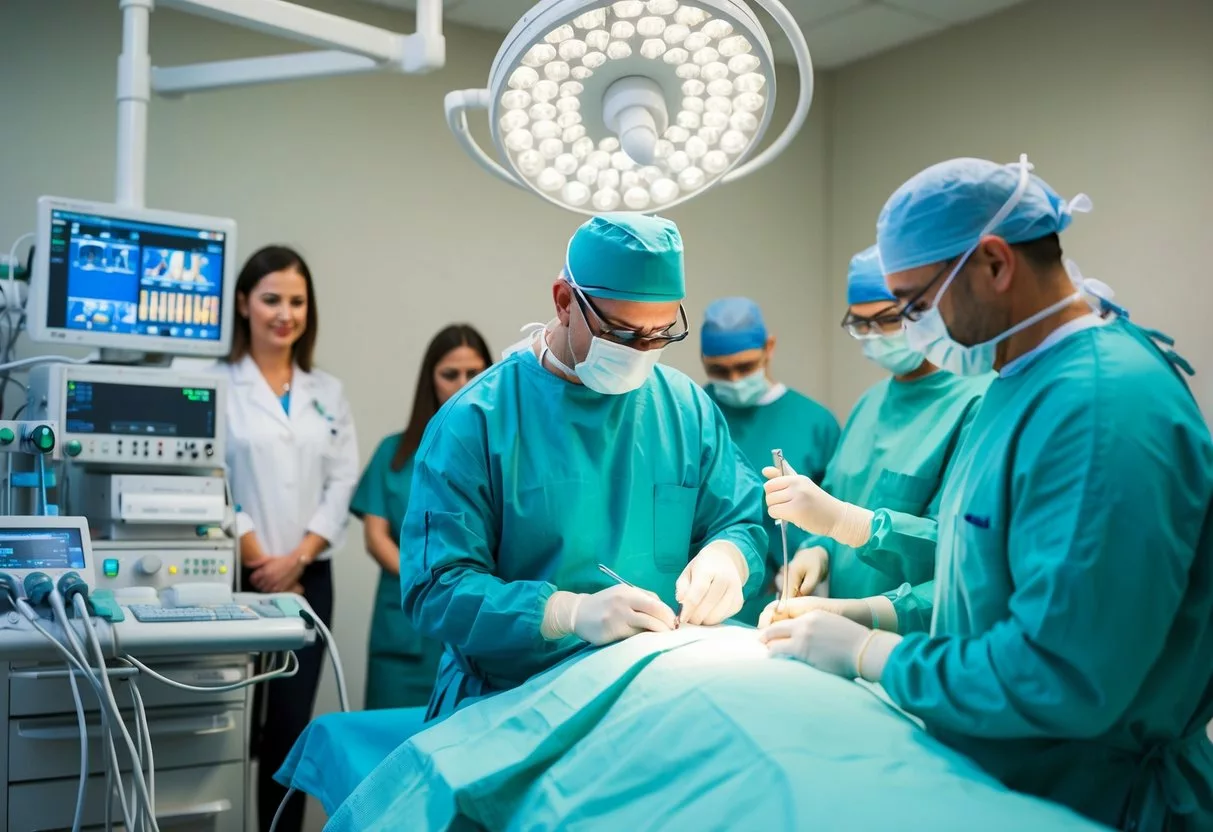
Reconstructive surgery uses various techniques to restore form and function. These methods include tissue expansion, skin grafts, microsurgery, and implants. Each approach serves specific purposes in rebuilding damaged or missing body parts.
Tissue Expansion and Skin Grafts
Tissue expansion involves inserting a balloon-like device under the skin. This device is slowly filled with saline, stretching the skin over time. The expanded skin can then cover larger areas during reconstruction.
Skin grafts use healthy skin from one part of the body to cover damaged areas. Full-thickness grafts include all skin layers and are used for smaller areas. Split-thickness grafts take only the top layers and can cover larger surfaces.
Both techniques help in burn reconstruction, breast reconstruction, and treating large wounds. Surgeons choose the best method based on the injury type, location, and size.
Microsurgery and Tissue Transfer
Microsurgery uses tiny tools and a microscope to repair small blood vessels and nerves. This technique allows surgeons to reattach severed body parts or transfer tissue from one area to another.
Free flap surgery is a common microsurgical method. It involves moving skin, muscle, and blood vessels from a donor site to the reconstruction area. The surgeon then connects the blood vessels to restore circulation.
This advanced technique is crucial for complex reconstructions like breast rebuilding after cancer or repairing severe facial injuries. It allows for more natural-looking results and better function.
Reconstructive Implants and Prosthetics
Implants and prosthetics play a key role in many reconstructive procedures. They help restore shape and function when natural tissue is not enough.
Breast implants are common in reconstruction after mastectomy. Surgeons can place them under chest muscles or use tissue expanders first.
Facial implants help rebuild features after trauma or cancer surgery. Custom-made implants can match a patient’s unique anatomy for better results.
Prosthetic limbs have advanced greatly. Modern designs offer better function and comfort. Some even connect to nerves, allowing more natural movement.
Specialized Reconstructive Procedures
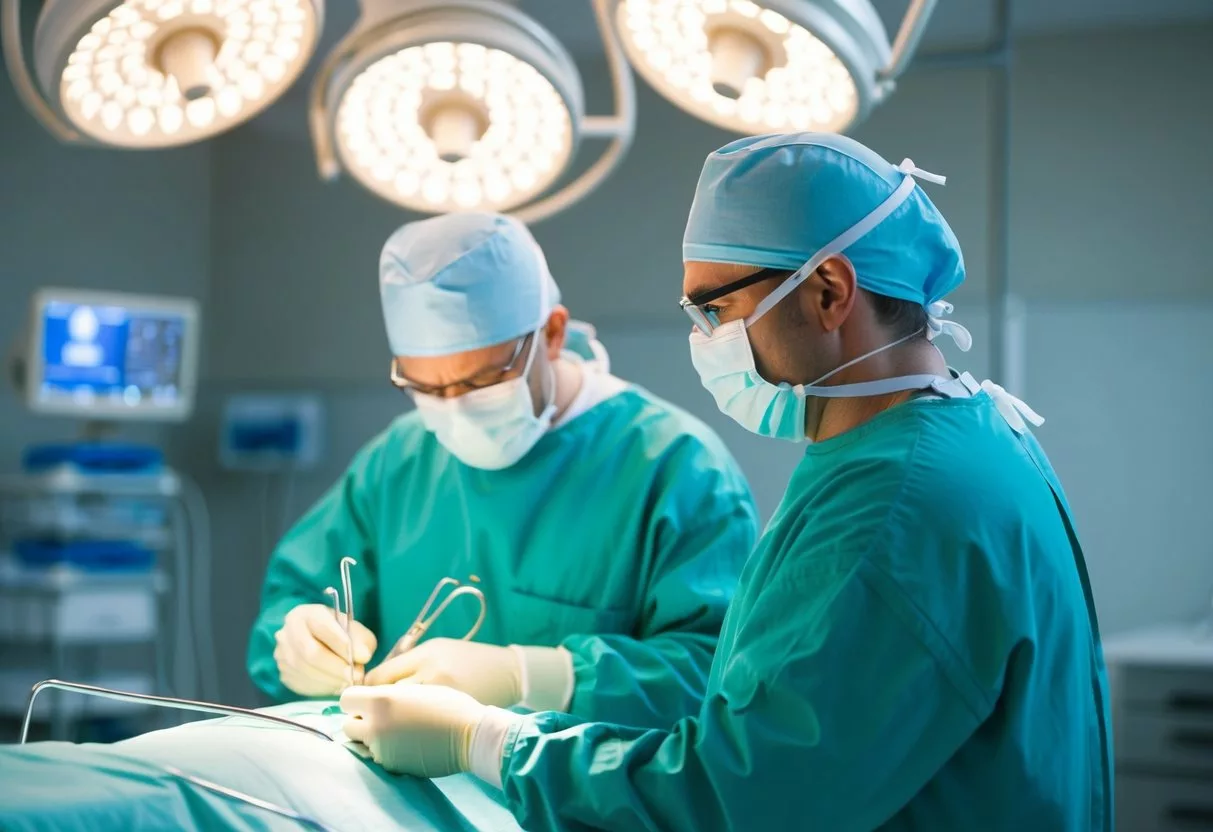
Reconstructive surgery offers tailored solutions for various medical conditions and injuries. These procedures aim to restore function and appearance for patients with diverse needs.
Rhinoplasty and Facial Reconstructive Surgery
Rhinoplasty is a common facial reconstructive procedure. It can fix breathing problems and improve the nose’s shape. Surgeons may use cartilage from other parts of the body to rebuild the nose.
Facial reconstruction also includes repairing cleft lips and palates. These surgeries help children eat, speak, and breathe better. Burn victims often need facial reconstruction too. Doctors use skin grafts and tissue expansion to restore damaged areas.
Orthognathic Surgery for Jaw Alignment
Orthognathic surgery fixes jaw alignment issues. It helps people with trouble chewing, speaking, or breathing. The surgery moves the upper jaw, lower jaw, or both into the right position.
Patients with sleep apnea may benefit from this surgery. It can open up the airway and improve breathing during sleep. Recovery takes several weeks, and patients need to follow a special diet at first.
Reconstructive Breast Surgery Variations
Breast reconstruction has many options. Some women choose implants after mastectomy. Others use their own tissue from the belly or back.
Nipple reconstruction is often the final step. Surgeons can create a new nipple using skin from the breast. Tattooing can add color to match the other side.
Breast implant removal is another type of reconstructive surgery. Some women choose this due to complications or personal preference.
Extremity Reconstructive Surgery
Extremity reconstruction helps patients with limb injuries or diseases. It can fix problems from accidents, burns, or cancer.
For hands, carpal tunnel syndrome surgery is common. It relieves nerve pressure in the wrist. Surgeons may also reconstruct fingers lost in accidents.
Leg reconstruction often involves fixing complex fractures. Surgeons use metal rods, plates, or external fixators. For severe injuries, microsurgery can reattach blood vessels and nerves.
Cancer-Related Reconstructive Surgeries

Cancer treatments can change a person’s body. Reconstructive surgery helps fix these changes. It aims to restore function and appearance after cancer treatment.
Post-Tumor Removal Reconstruction
Reconstructive surgery often follows tumor removal. Surgeons work to rebuild areas affected by cancer surgery.
For breast cancer, reconstruction can recreate the breast shape. Options include:
- Implants
- Using the patient’s own tissue (flap surgery)
- A mix of both methods
Fewer than 25% of breast cancer survivors know about all their reconstruction choices. It’s important for patients to discuss options with their doctors.
Other cancers may also need reconstruction. Head and neck cancers might require facial reconstruction. Skin cancer removal could need grafts to cover the area.
Managing Complications in Cancer Survivors
Some cancer survivors face long-term issues after treatment. Reconstructive surgery can help with these problems.
Lymphedema, a swelling in arms or legs, can happen after lymph node removal. Surgery can create new pathways for fluid drainage. This helps reduce swelling and discomfort.
Radiation therapy can cause skin tightness or scarring. Surgeons may use techniques like tissue expansion or flap surgery to improve these areas.
Some patients need help with speech or swallowing after throat cancer. Special reconstructive procedures can improve these functions.
Pain from nerve damage is another issue. Nerve reconstruction or grafting might offer relief in some cases.
Reconstructive Surgery for Trauma and Injury
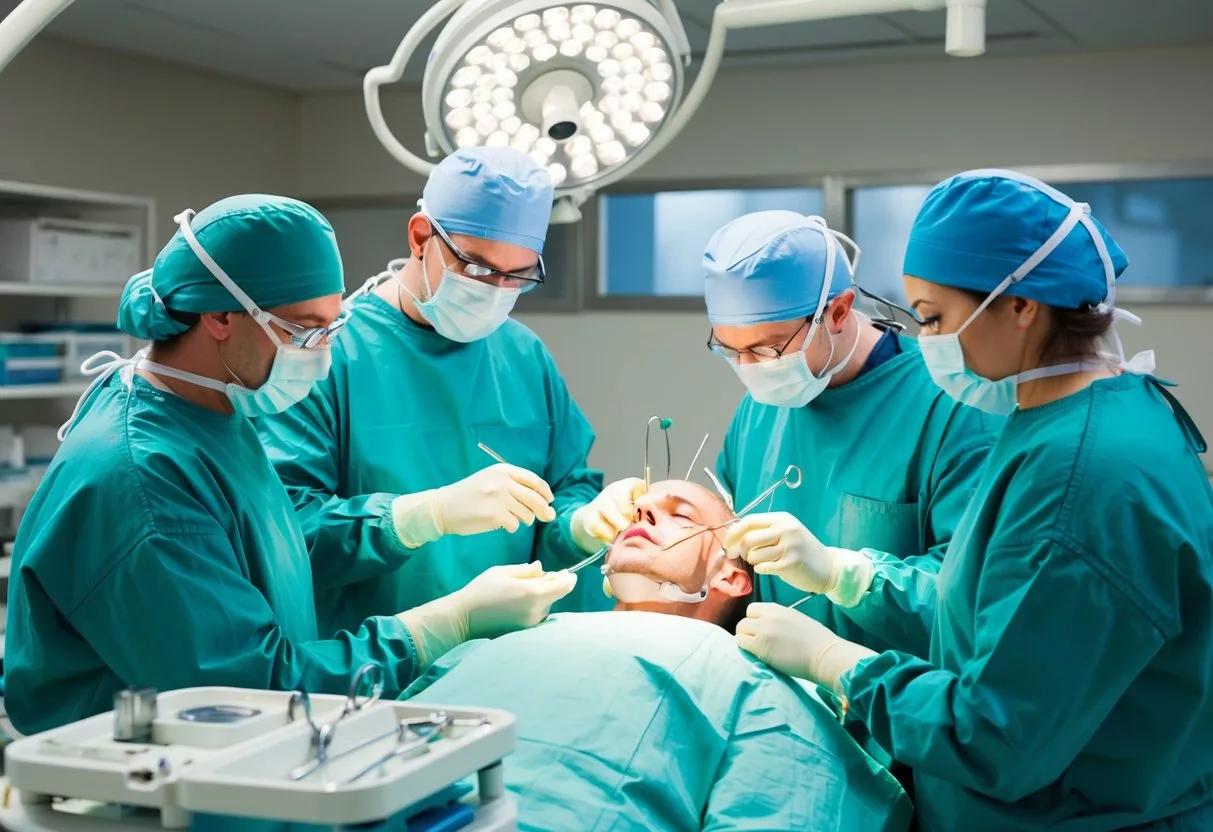
Reconstructive surgery helps people recover from serious accidents and injuries. It can fix damaged body parts and restore function. Skilled surgeons use special methods to repair complex wounds.
Repairing Damage from Accidents and Violence
Reconstructive surgery fixes injuries from car crashes, burns, and other accidents. It can also help victims of violence. The goal is to make the injured area work and look as normal as possible.
Surgeons use skin grafts to cover large wounds. They may move muscle or bone to rebuild damaged areas. For facial injuries, they can reshape features like the nose or jaw.
Some common reconstructive procedures after trauma include:
- Repairing fractured bones
- Fixing nerve damage
- Treating severe burns
- Rebuilding ears or noses
The recovery takes time. Patients may need multiple surgeries. Physical therapy helps regain function in the affected body parts.
Reconstructive Hand Surgery
Hand injuries can severely impact daily life. Reconstructive hand surgery aims to restore movement and feeling. It treats problems from accidents, burns, or birth defects.
Surgeons can repair:
- Torn tendons and ligaments
- Broken bones
- Nerve damage
- Skin loss
They use small tools and microscopes for precise work. Some methods include:
- Tendon transfers to restore finger movement
- Nerve grafts to bring back sensation
- Skin flaps to cover open wounds
After surgery, specialized hand therapy is key. It helps patients regain strength and dexterity. The recovery process may take months, but can greatly improve hand function.
Risk and Complications in Reconstructive Surgery
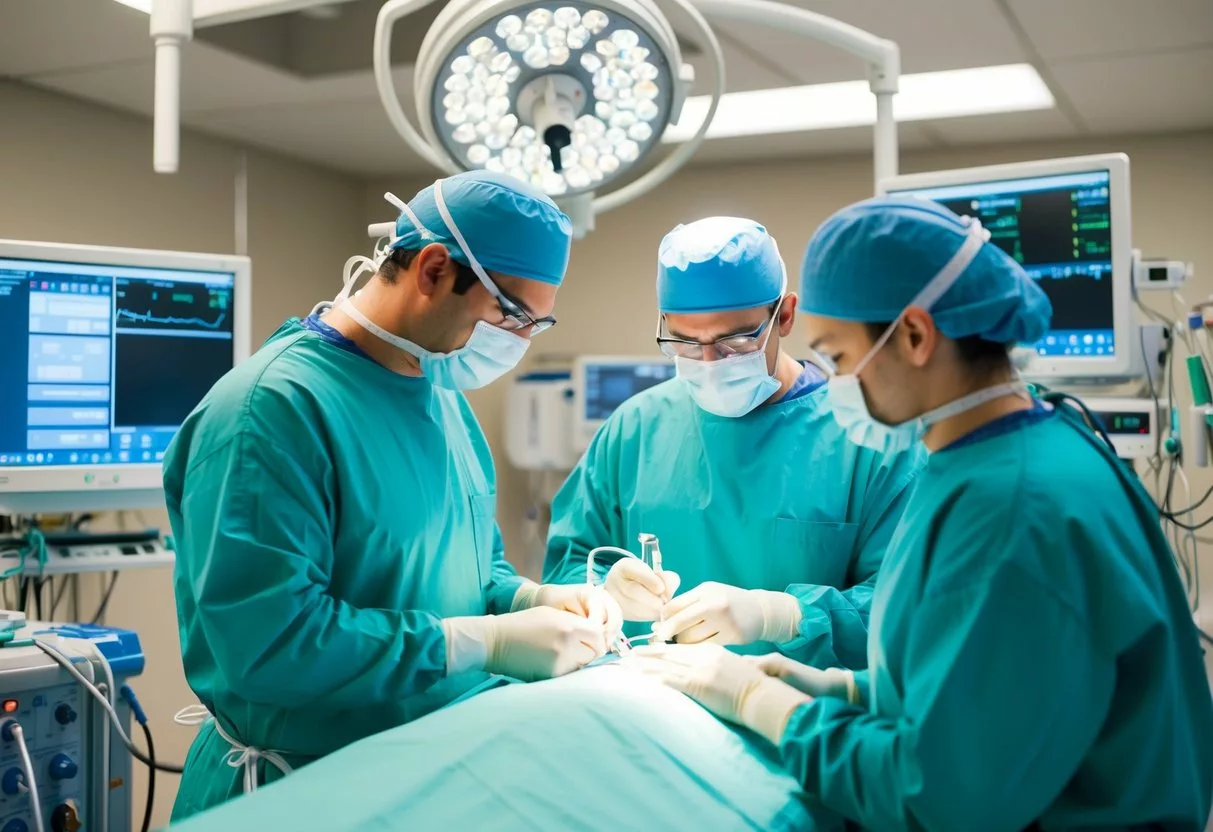
Reconstructive surgery comes with potential risks and complications. Patients need to be aware of these issues and take steps to reduce their chances of problems. Proper care before and after surgery is key.
Minimizing Surgical Risks
Reconstructive plastic surgery carries risks like any operation. Common risks include bleeding, infection, and reactions to anesthesia. Some specific risks are:
• Blood clots • Wound healing problems • Fluid buildup • Nerve damage • Scarring
To lower risks, patients should:
- Stop smoking
- Maintain a healthy weight
- Control chronic conditions like diabetes
- Follow all pre-op instructions
- Choose a board-certified surgeon
The surgeon will review all risks before the procedure. Patients should ask questions to fully understand what to expect.
Dealing with Postoperative Complications
Even with proper care, complications can occur after surgery. Common issues include:
• Pain and swelling • Bruising • Numbness • Infection
Patients need to follow all post-op care instructions carefully. This helps prevent problems and catch any issues early. Signs of infection to watch for:
- Fever
- Increased pain or swelling
- Redness or warmth at incision site
- Pus or drainage
Contacting the surgeon right away about any concerns is crucial. Quick treatment of complications leads to better outcomes. Physical therapy may be needed to regain function and reduce scarring.
The Impact of Research and Advancements
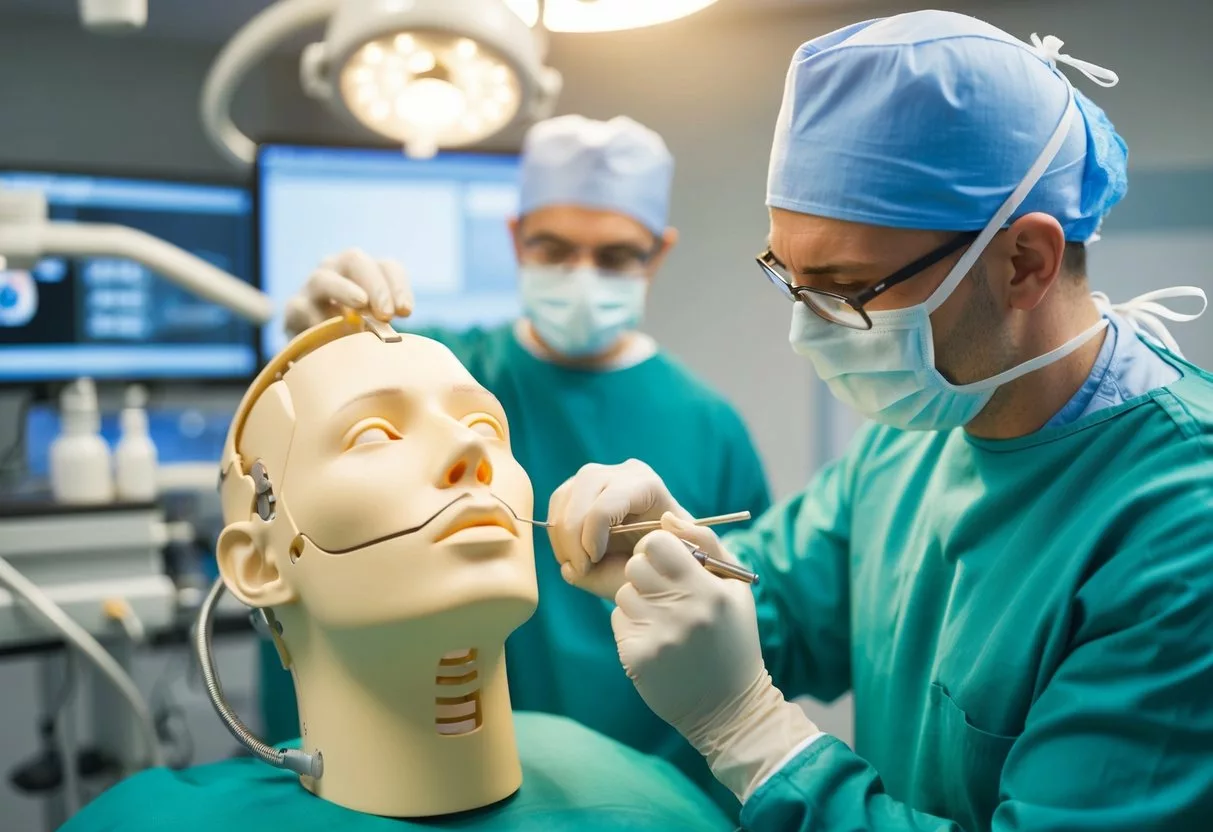
Research and advancements in reconstructive surgery have transformed patient care. New techniques and technologies are improving outcomes and expanding treatment options.
Innovations in Tissue Engineering and Regeneration
Tissue engineering is revolutionizing reconstructive surgery. Scientists can now grow new skin, cartilage, and even bone in labs. This helps patients who need large amounts of tissue for repairs.
Johns Hopkins researchers have made breakthroughs in growing ear-shaped cartilage. This aids children born without ears.
3D printing also plays a key role. Surgeons use it to create custom implants and tissue scaffolds. These fit patients perfectly and promote healing.
Stem cell therapy shows promise too. It may help regrow damaged nerves and muscles in the future.
Clinical Trials and Outcome Studies
Clinical trials test new treatments and surgical methods. They ensure patient safety and prove what works best.
Large outcome studies track results over time. This data helps surgeons pick the right procedures for each case.
Recent trials have improved breast reconstruction techniques. They’ve also found ways to reduce scarring after surgery.
Studies on fat grafting have made the process safer and more effective. This benefits both reconstructive and cosmetic patients.
Outcome research also guides surgeon education. It helps teach the most up-to-date and effective methods.
Reconstructive Surgery in Specific Populations
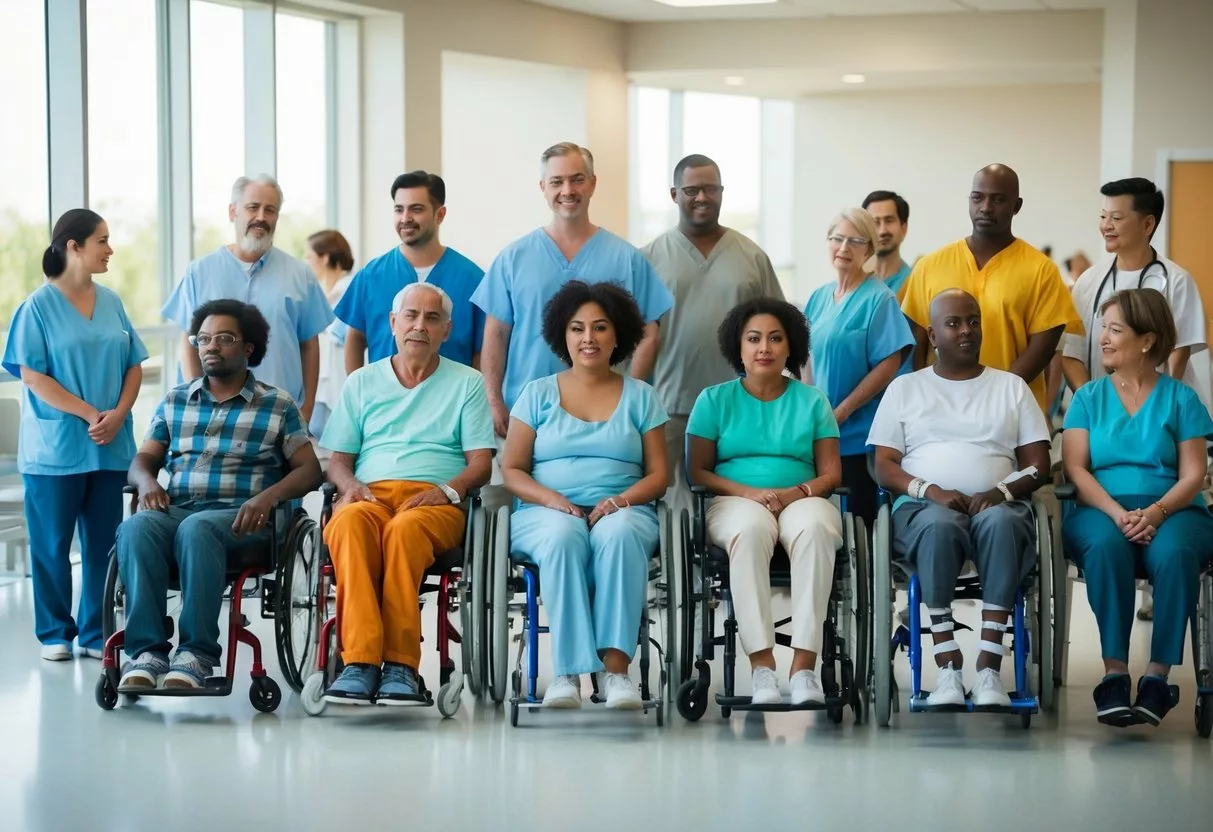
Reconstructive surgery meets unique needs across different age groups and genders. It helps restore function and appearance for children, older adults, and those seeking gender-specific procedures.
Pediatric Reconstructive Surgery
Children often need reconstructive surgery for birth defects or injuries. Cleft lip and palate repair is a common procedure. It fixes facial deformities and improves eating and speaking.
Burn care is another key area in pediatric reconstructive surgery. It helps kids recover from serious burns and reduces scarring.
Some children need hand surgery to fix problems like extra fingers or fused digits. This improves hand function and appearance.
Surgery for the Aging Population
As people age, they may need reconstructive procedures to maintain function and quality of life. Breast reconstruction after cancer is common in older women.
Hand surgery helps older adults with conditions like carpal tunnel syndrome or arthritis. It can reduce pain and improve hand movement.
Facial reconstruction may be needed after skin cancer removal. This restores appearance and prevents further damage.
Addressing Gender-Specific Needs
Reconstructive surgery can address gender-specific concerns. For men, gynecomastia surgery reduces excess breast tissue.
Women may seek breast reduction to ease back pain or improve body proportion. This can enhance comfort and self-esteem.
Gender confirmation surgeries help align physical features with gender identity. These may include facial feminization or masculinization procedures.
Reconstructive techniques can also repair damage from cancer treatments. This includes breast reconstruction after mastectomy or genital reconstruction after cancer surgery.
Choosing a Reconstructive Surgeon
Picking the right reconstructive surgeon is crucial for a successful outcome. It involves looking at their skills, experience, and how well they communicate with patients.
Evaluating Experience and Credentials
When selecting a reconstructive surgeon, check their board certification in plastic surgery. Look for surgeons who have done many reconstructive procedures like the one you need. Ask about their training and how often they do this type of surgery.
Find out if the surgeon has worked on cases like yours before. Good reconstructive surgeons often show before and after photos of their work. They should be able to explain different options clearly.
It’s smart to read reviews from other patients. These can give you an idea of the surgeon’s bedside manner and results. Some hospitals have online portals like MyChart where patients can leave feedback.
Consultation and Planning for Reconstruction
During your first meeting, the surgeon should listen to your goals and concerns. They need to explain all your options in simple terms. A good surgeon will talk about the risks and what you can expect after surgery.
The surgeon should do a thorough exam and take your medical history. They might order tests to make sure you’re healthy enough for surgery. Together, you’ll make a plan that fits your needs.
Ask if you can see a 3D model or drawing of the expected results. This helps you understand what the surgeon plans to do. Make sure you feel comfortable asking questions. A caring surgeon will take time to answer them all.
Post-Surgical Care and Recovery
Proper care after reconstructive surgery is crucial for healing and getting the best results. Patients need to follow their doctor’s instructions closely and be patient during recovery.
Managing Recovery at Home
After surgery, patients should rest and avoid strenuous activities. Keeping the surgical site clean is important to prevent infection. Patients may need to change bandages or empty drains as directed by their doctor.
Pain management is key in the first days and weeks. Doctors usually prescribe medicine to help with discomfort. Patients should take it as instructed.
Eating healthy foods and staying hydrated aids healing. Some patients may need help with daily tasks at first. Having a family member or friend assist can be very helpful.
Physical Rehabilitation and Therapy
As healing progresses, patients often start physical therapy. This helps regain strength and range of motion. For procedures like jaw straightening or deviated septum correction, special exercises may be needed.
Therapy can also help with swelling and scar management. Patients might learn massage techniques or use compression garments.
For eye surgeries like blepharoplasty, exercises to strengthen eye muscles may be recommended. Vision therapy could be part of recovery for some procedures.
Patients recovering from migraine surgery or chronic headache treatments may need to work on posture and neck exercises. The goal is to prevent tension that could trigger headaches.
Frequently Asked Questions
Reconstructive surgery after mastectomy involves different techniques, recovery times, and considerations. Patients often have questions about types of procedures, risks, costs, and eligibility.
What are the common types of reconstructive surgery performed after mastectomy?
Common types include implant-based reconstruction and flap procedures. Implants use silicone or saline prosthetics to recreate breast shape.
Flap surgeries use tissue from other body areas like the abdomen or back. These techniques can provide a more natural look and feel.
How does reconstructive surgery differ from cosmetic surgery?
Reconstructive surgery aims to restore form and function after illness or injury. It helps patients regain a sense of normalcy and body image.
Cosmetic surgery enhances appearance for purely aesthetic reasons. Insurance typically covers reconstructive procedures but not cosmetic ones.
What is the average recovery time for patients undergoing reconstructive surgery?
Recovery times vary based on the procedure. Initial healing takes about 3 months for most reconstructive surgeries.
Full recovery can take 6-12 months. Patients may need additional procedures during this time to refine results.
What risks should be considered before proceeding with reconstructive surgery?
Risks include infection, bleeding, and poor wound healing. Implants can rupture or cause capsular contracture.
Flap procedures may result in tissue death or weakness at the donor site. Discuss all potential complications with your surgeon beforehand.
What factors affect the cost of reconstructive surgery?
Factors influencing cost include the type of procedure, hospital fees, and surgeon’s expertise. Insurance coverage also plays a major role.
Most plans cover breast reconstruction after mastectomy due to federal law. Check with your provider about specific coverage details.
Who are the ideal candidates for reconstructive surgery following cancer treatment?
Ideal candidates are in good overall health and have realistic expectations. They should also be finished with cancer treatments like radiation.
Patients must be emotionally ready for the process. Discussing options with a plastic surgeon can help determine if reconstruction is right for you.